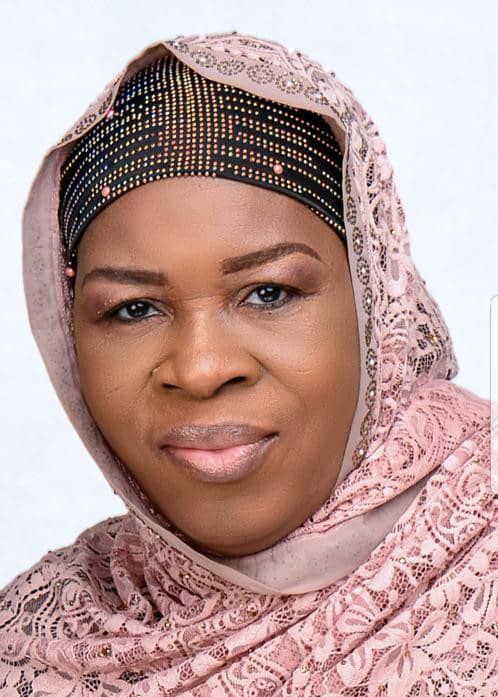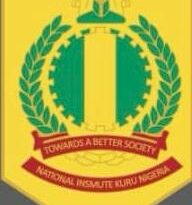Tinubu’s Isi Nkita and Oti’s Isi Odum Outfits, By Okey Ikechukwu
Remember President Muhammadu Buhari’s visit to Imo State last year? Now, be careful! Don’t entertain, or try to entertain, any mischievous thoughts about the length and general configuration of the pair of trousers Mr. President wore on that occasion. It was certainly a distressing sight, but that is not our concern here today. The presumed Igbo garment he wore on top, which the state governor the then Ohaneze President-General and the “Igbo leaders and dignitaries” present also wore, is the issue here.
To all Nigerians, and the world at large, the Igbo leadership elite turned up in Imo State, decked out in the traditional Igbo outfit of Efe Isi Agu, to receive Buhari on behalf of Ndigbo. But were they really dressed in the right attire? I think not. And the reason is simple: The clothes they wore had the head of a lion (Odum) and not the head of a leopard (Agu) emblazoned on them. Thus, they saw themselves as wearing the traditional Igbo outfit for the highest possible occasion in the land on that occasion, when they were not. They would not have dressed the way they did if they knew better.
The point to note, and which is being made here, is that anyone parading the material that is routinely paraded everywhere today as the Igbo traditional attire, especially for men, should be told that Agu is not Odum, and Odum is not Agu. It is as simple as that. With the nascent, and even possibly pubescent, Igbo elite totally unaware of what they have walked themselves into, we now have about two generations of the young and old who do not know that Agu is not lion. Poor cultural education and the emergence of upstarts as cultural and leadership icons in Igboland are to blame for this.
That is why, everywhere today, the predominantly red background of this unduly thick material, within and around which is embedded the head of a lion, is the major defining motif for Isi Agu dress. But then, you also now find the head of a horse, or a dog with a hairy head area, donning the red material. And these still get passed off as traditional Isi Agu dress. Who knows, we may yet find one with the head of a snake, a drowning fish, or a wounded porcupine, as Efe Isi Agu.
Go on the internet and you will see images of Asiwaju Bola Tinubu donning what you will easily assume is the Igbo traditional attire. But look more closely. See the long snout of the animal on the dress? Well, that is the head of a lovely, well-manicured, hairy-headed dog and not a lion or a leopard. This spectacle, as presented to the public with intense feelings of solidarity with Ndigbo, is not really Asiwaju donning the Igbo traditional outfit.
It is Asiwaju donning Efe Isi Nkita (cloth bearing the head of a dog). The dog is one of the least rated animals in Igboland, so Asiwaju’s Igbo handlers should please take note. The man should be wary of the counsel of those who do not know the true Isi Agu and Isi Odum. He should also not go around parading an animal that is known as 404 in some part of the South-South as Efe Isi Agu.
As I said on this page, late January, “Umahi wiped the subsisting shame of Igbo cultural bigwigs, intelligentsia, and political elite when he and his people wore the correct Isi Agu (leopard head) outfit to a rally of the APC held in his state. Igbo leadership, including Ohaneze chieftains, received Buhari in Owerri dressed in the wrong outfit of “Isi Odum” (Lion Head), which over 90% of the Igbo population actually assume is Isi Agu”.
Look wherever you may, the story is the same. This goes for Ndigbo in the Diaspora, where the situation is much worse. Our dear brother and friend, Alex Oti, the man whom I believe will bring Abia State to its long overdue glory, has an official picture where he is seen donning the same material, with the head of a lion (Isi Odum). Oti is a double-rated lion in the business and intellectual circles in his own right. So, he may wish to substitute the Isi Odum with Isi Agu, to send out a signal that will guide his ailing and failing political and elite peers – as well as the youths.
But, wait a minute! Where, how and why did all this confusion spring up? If the word “isi” means head in Igbo language, does “Agu” mean the head of any and whatever animal you can print on a piece of cloth with red background? Certainly not!
And that raises a simple and straightforward question: “Which animal’s head should be on the red background material for it to be rightly called Isi Agu dress; which would thus make it the authentic Igbo attire it is claimed to be? The confusion in this regard is further compounded by the fact that some men whose traditional title is “Ogbu Agu” (Leopard Killer) introduce themselves in public as “Lion Killer”, when translating the meaning of their title into the English language. Back then, what you found hanging on the wall of any man who bore the revered, and partly dreaded, title of Ogbu Agu was the skin of the leopard he killed.
I say nothing about the fact that Igboland now has many Ogbu Agus (leopard killers) who cannot kill a limping rat in their backyards. You also have many with the title of “Ochi Agha” (War leader, or General) who can neither defeat a sick man in a wrestling march, nor fire a catapult at a stationary object with anything but appalling inaccuracy.
In three particular instances, I saw the title “Agu Nze” (literally “Man of Heroic Integrity”) translated as “Royal Lion”. And this by people to whom the younger generation of Ndigbo are looking up for guidance. Therein lies a deep and serious problem that says more than is apparent at face value. So, let us place it on record that Agu is Leopard and not Lion. But, let us also still take this conversation further.
Every part of the world has its giant cat. The biggest of all cats is the Tiger (Panthera Tigris) of which the Siberian Tiger is said to be the largest, at 660 pounds and measuring ten feet from head to tail. We call the Lion “King of the Forest”. That cannot be true for every forest. Even for the forest in which the lion resides, it is not king of every part, like the rivers within the forest. In the latter, the crocodile is often the king – and a king dreaded by lions, hyenas, antelopes, buffalos and even elephants in the area.
The lion thrives best in semi-open plains, unlike the leopard; which is a climber and stealth hunter. Even in its favorite habitat, the lion cannot hold the title of king if the tiger turns up. Thus, the lion is not the king of any forest where you have even one full-grown Asian Tiger.
Lions are only known for their exploits, extravagant show of dominance and frolicsome independence in the plains of Africa, parts of the Savannah, the Serengeti and other places. They do not thrive in marshlands and wet zones, which is what we have in the more southerly parts of the country, or our Rain Forest belt. Thus, the giant cat of the Rain Forest, belt, also extending a little into the Savannah, is mostly the Leopard.
Lions were not common sights in the South East, but they were known and were seen when they strayed from the middle belt Savannah into the outskirts of the Rain Forest area from time to time. The Igbo saying “Odum na-egbu agu” (The lion is more powerful, and can demolish the leopard) is intended to induce caution in people who overrate themselves in one way or another. To further see the denotative and connotative nuances of the concept of Agu, among others, in Igbo thinking let us examine a few things.
The crocodile is called Agu Iyi; which literally means “leopard of the river”; or the largest and most dangerous predator you can find in any body of water. Then there another Agu, apart from the crocodile. That is the cunning Agu Owulu, or fox, the dreaded sneaky hunter with a lot of hair around the head area, which will snatch up your chicken in the dead of night with incredible stealth.
But you also find people who call the Wall Gecko “Agu Uno” (leopard of the house), while others call it “Aghu Uno” (alligator of the house) and “Ari uno”, (rainbow Lizard of the house) respectively. Agu is leopard, Aghu is alligator, and Arigha Omi is the rainbow (not Agama) lizard. Aghu, which is a member of the lizard family, is reputed to be hard of hearing. The small and “chumperic’’ domestic relative of aghu, like its bigger brother, is not easily stirred by the sounds of life around it. The slithering “Arigha Omi”, with its quick and short dashes in movement, is also a possible root of the gecko’s other Igbo name of Ari Uno. Maybe.
Let us look at another Igbo word and how it is sometimes used as a qualifier, the way agu is used as qualifier in an environment. The word “Ugbo Ala”, is translated as “car” in English. Air plane is translated as Ugbo Elu. Ugbo nmiri is boat, ship or water going vessel. Then you have Ugbo Aja (the trough, or receptacle, with which you carry the offering, or sacrifice). So, what is the meaning of the word “Ugbo” itself? A receptacle, perhaps? A means of conveyance? That in which something is carried from one place to another?
Just as there is the ugbo for carrying people on land, on water and in the air, you also have the Agu, as the representation of daring, heroic courage and dominance in any environment. That is the basis of the Igbo saying “Ebube agu n-eche agu”, (the very aura, strength and agility of the leopard serves as its shield and protection).
So, enough of the misrepresentations of Isi Agu, before we end up with Efe Isi Okuko or even Efe Isi Agbusi!
Ikechukwu is the Executive Director, of Development Specs Academy; and Senior Fellow, Nnamdi Azikiwe University, Awka.




